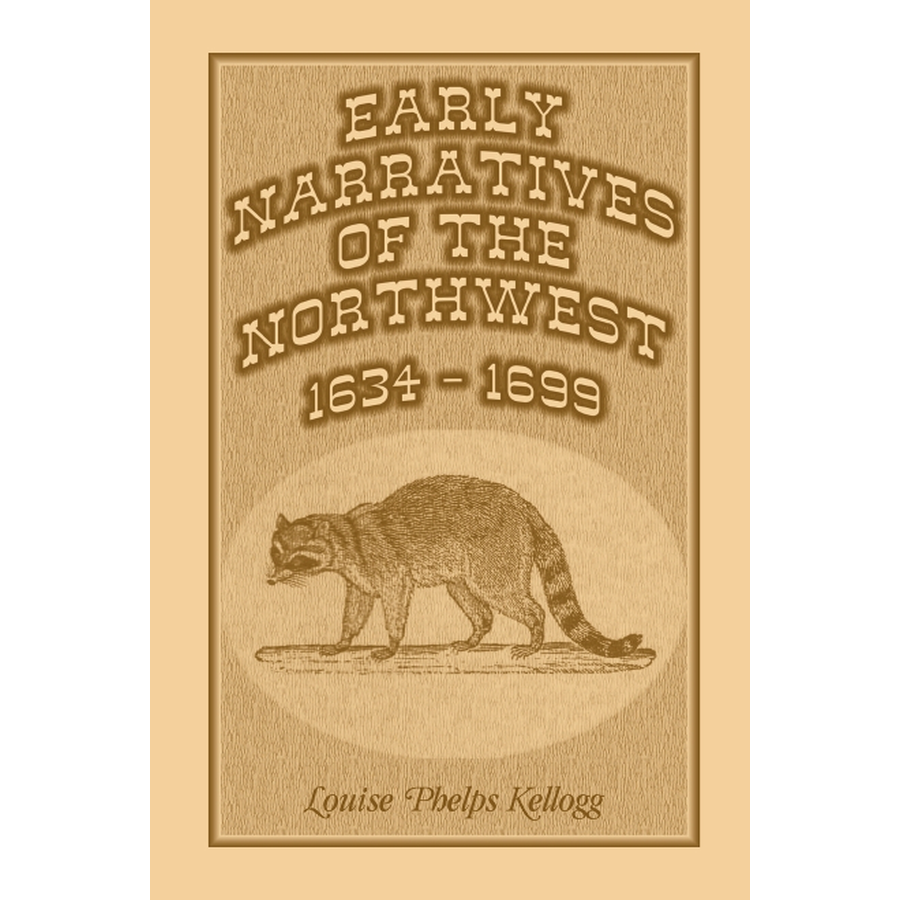Early Narratives of the Northwest: 1634-1699
Couldn't load pickup availability
In the seventeenth century, the term "Northwest" was used to designate the region of the upper Great Lakes and the northeastern part of the Mississippi Valley. The discovery and exploration of this country was accomplished by the French. The leaders of these expeditions were from two walks of life, military officers of the colonial troops and missionaries of the Church. Samuel Champlain was the first of the great French explorers. Jean Nicolet, one of Champlain's chosen interpreters, as early as 1634 traveled beyond the shores of Lake Huron, through the straits of Mackinac, out upon Lake Michigan, and landed in the present state of Wisconsin. With the narrative of Nicolet's voyage our volume begins. Meanwhile, in the heart of the Ontarian forests, the Jesuits had established several missions which they used as bases for further exploration. Fathers Raymbault and Jogues journeyed to Sault St. Marie and opened the way to Lakes Huron, Michigan and Superior. In 1669-1670, the Sulpician missionaries, Galinee and Dollier de Casson, seeking new fields for converts, skirted the shores of Lake Ontario, wintered almost within sound of the Falls of Niagara, and the following spring navigated Lake Erie, the straits of Detroit and St. Clair, and crossing Lake Huron arrived at Sault Ste. Marie, thus completing the circuit of the Great Lakes. The interior wilderness was more difficult to penetrate than the great bodies of water. Some time between 1650 and 1660, two daring voyageurs, known to us as Radisson and Grosseilliers, accompanied a trading fleet of Indians to the Upper Country and spent several years upon the shores of Green Bay and Lake Superior, wandering far through inland forests, mingling with various tribesmen, trafficking for their rich stores of furs, and learning the woodland routes. In 1665, Nicolas Perrot conceived the plan of carrying goods into the Indian country, and of securing alliances with the tribesmen who were thickly clustered around the western end of Green Bay. To this same region in 1669 came Father Claude Allouez, who in his travels explored the waterways that interlace the Fox River route and lead to the waters of the Mississippi, which yet remained to be discovered. Louis Jolliet, a native-born Canadian, was sent by the governor of New France to make this discovery. He secured for his proposed journey the companionship of Father Jacques Marquette. To help illustrate the remarkable journals of these explorers, this book contains a facsimile of a page of Radisson's journal, a map of Marquette's discoveries and a portion of Franquelin's Great Map of 1688. This work was originally published in 1917 by the distinguished State Historical Society of Wisconsin as part of the series of Original Narratives of Early American History. A renowned historian in her own right, Dr. Kellogg was a colleague of Reuben Gold Thwaites.
Louise Phelps Kellogg
(1917, 2001), 2011, 5.5" x 8.5", paper, index, 406 pp.
ISBN: 9780788417405
101-K1740

